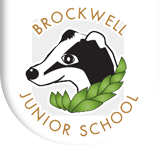Art– Being creative for an audience
“Art has the role in education of helping children become more like themselves instead of more like everyone else.” Sydney Gurewitz Clemens
“You can’t use up creativity. The more you use, the more you have.” Maya Angelou
Art education stimulates creativity and imagination, whilst giving the child unique opportunities to develop intellectually, emotionally, physically and socially. In this phase the children will learn to improve their mastery of art and design techniques by learning specific drawing, painting and sculpture techniques. They will experience using a wider range of materials. Children also use technology to produce images, patterns and decorative pieces of work. They will record their observations and ideas and use them to review and evaluate improvements. They will also learn about great artists, architects and designers in history. Children are guided to explore their responses to pieces of art.
With content enhancing other curriculum areas, children explore different techniques using a wide variety of materials. In the course of their activities, children are encouraged to become aware of “basic elements” such as “line”, “design”, “mood” and “style”. Emphasis is placed on developing originality, individual powers of observation and description, and a positive self-analysis of their work. This process is cyclical and is developed throughout the four years. We access experts in local secondary schools such as when making Greek clay pots in the art studios.
Over the phase, children learn about a range of artists, designers and architects such as Warhol, Banksy, William Morris, Rousseau, Lowry and Capability Brown.
To further encourage appreciation and personal responses to art and culture, we plan experiences and whole school events over the four years. Recent examples include sculpture workshops with local artist Jason Heppenstall, a study of children’s book illustrators and visits to Chatsworth and the Yorkshire Sculpture Park.
Community initiatives such as Monkey Park plans, Badger Park plans, local pharmacy competition and Chesterfield in Bloom are well supported.
Art Policy
Art progression Map – specific knowledge and skills
